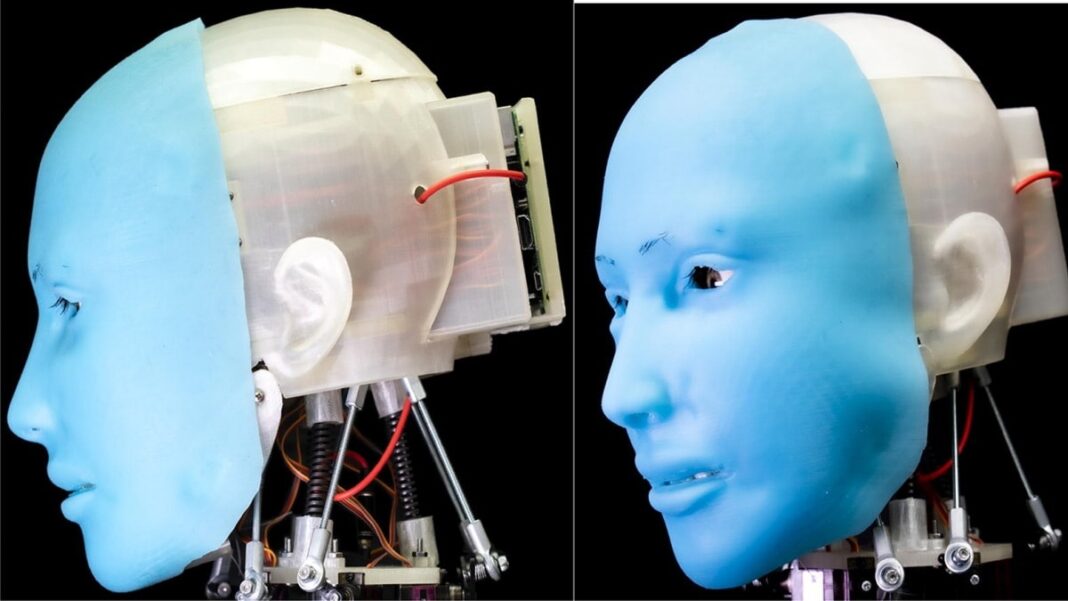A team of scientists from Columbia University’s Department of Mechanical Engineering has made a major breakthrough and developed a robot that can smile, smile, raise eyebrows and mimic the wrinkles on the forehead of humans. An artificial intelligence-powered robot named EVA can imitate human facial expressions to a degree not previously seen in the field of robotics. While many humanoid robots have been developed over the past two decades, the emotional intelligence in robots has been largely limited. Scientists who were part of the study said that humanoid robots that perform facial expressions are expensive and inaccessible to most people, thus limiting the number of researchers in this field.
That’s exactly the aim of the study, titled “Facially Expressive Humanoid Robotic Faces,” published in the journal Science Direct. Scientists said the development could aid potential artificial intelligence researchers by providing a relatively inexpensive, open-source robot that could serve as a platform for research into emotional communication between humans and machines.
Eva is an adult-sized human head and uses 25 muscles to mimic facial expressions, head movements, and speech, reading the paper’s abstract. The humanoid head consists of 12 facial muscles that have the ability to produce a displacement of up to 15 mm of skin.
Although not as sophisticated as those developed by organizations such as Hanson Robotics and Hiroshi Ishiguro Laboratories, EVA is able to realistically mimic human facial expressions and head movements, the scientists said. She has also shared a video of how Eva works.
First, Eva uses deep learning and analyzes human facial gestures captured by the camera. Its cables and motors are pulled into action by pulling at various points on the robot’s soft skin, enabling it to communicate with facial expressions. For example, while happiness corresponds to one facial expression, the combination of joy and surprise corresponds to a different facial expression with happiness being surprised. “Not all emotional combinations will result in a sensible facial expression, but the list of reproducible facial expressions can generally be expanded by combining certain emotions,” the paper reads.
What purpose does such a robot serve for researchers?
A robot like EVA can be built and assembled relatively inexpensively with accessible equipment, scientists said. “Other facial expressive robots have proprietary designs and the time and cost of building an alternative from scratch far exceeds the time and cost of building on EVA’s current design,” he said. The robot could also serve as a long-term platform for emotional AI research. There are organizations that rent humanoid robots, but it is difficult to hire them for long-term academic research.
“EVA’s modular, open-source design allows for customization and improvements to its hardware. If documented and shared, these improvements will also aid other researchers in the field,” the paper says. Not only that, the robot can also be programmed in multiple languages, including Python, using open-source technologies on Raspberry Pi.













![Hotstar Premium Cookies 2019 [*100% Working & Daily Updated*] Hotstar Premium Cookies 2019 [*100% Working & Daily Updated*]](https://tahav.com/wp-content/uploads/2019/11/Hotstar-Premium-Cookies-Free-100x70.jpg)



